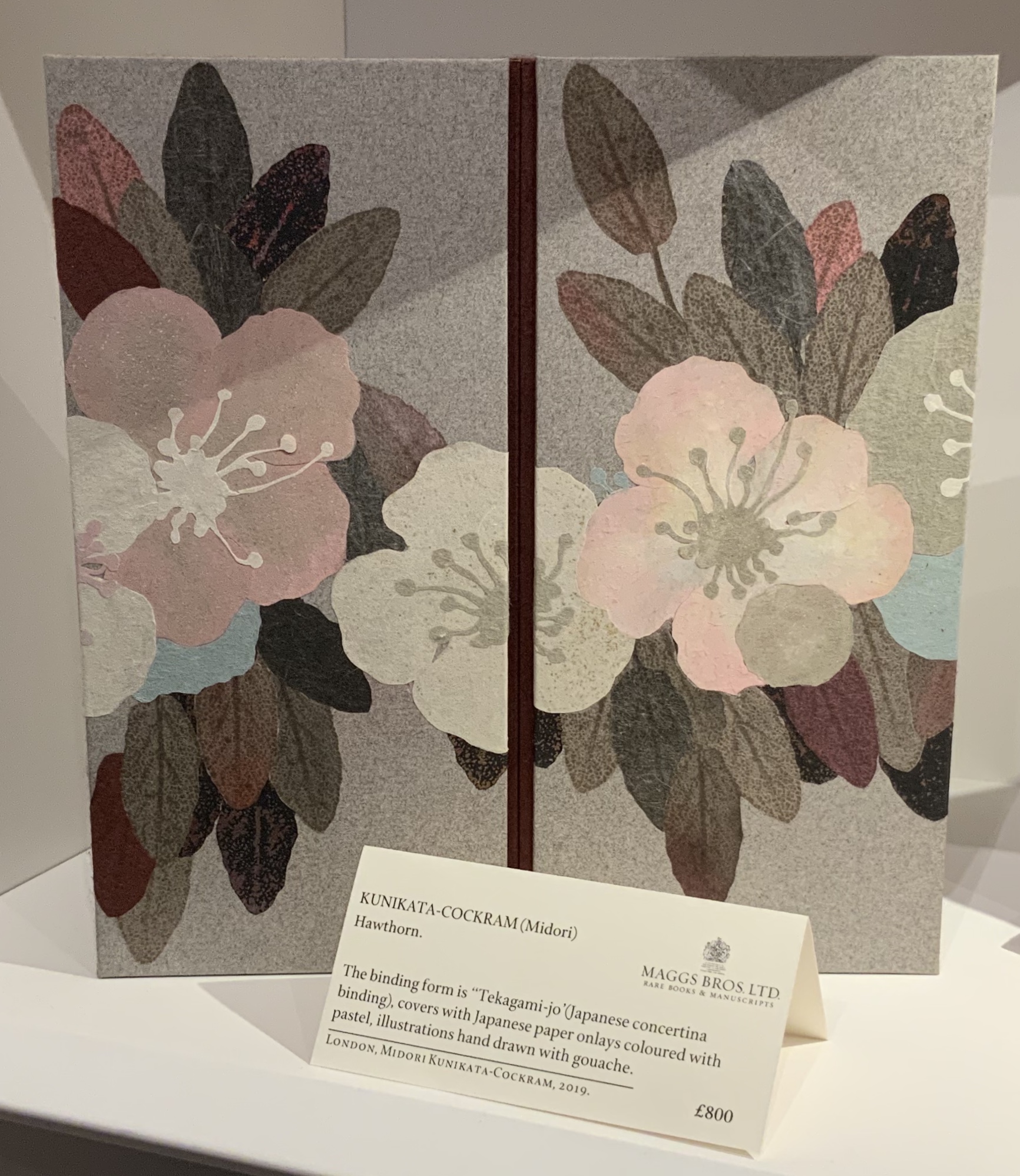The British Library and Maggs Bros Ltd (with Designer Bookbinders) have separately delivered a profusion of book arts and book art events for the month of May: from the BL, talks associated with the exhibition “Writing: Making Your Mark” and the series “Artists’ Books Now”; from Maggs Bros and DB, workshops and displays associated with London Craft Week (8-12 May).
At the British Library, I peered through the glass at the Diamond Sutra (868 AD). The distinctiveness of the portraits and the density of the carving rival that of 15th century Renaissance frescoes and Durer’s prints. Even if photography had been allowed, the vitrine and lighting would not permit my camera to capture the details, and reduced in size from the original, the postcard below barely does. Alternatively, a visit to the BL’s website yields a zoomable image by which you can judge the distinctiveness and density yourself.

If, counting from the time of Lucy in the Olduvai Gorge, the 5000 years of writing and reading makes for only a tiny sliver of the anthropocene, the era of reading books represents so far a sliver of that sliver. Belinda Jack, a Fellow and Tutor at Christ Church, Oxford, talked for a brief hour about the history of the reading “half” of the equation. Jack’s Reading: A Very Short Introduction is built on the premise that, unlike the writing half with its artefacts of bone, rope, clay, bamboo, stone, paper and screens, this other half’s history proceeds only through indirect evidence of what we do with the written, by speculation about our reaction to it.

Although she did not mention making art in, with or from books, it was impossible not to think of the “glass free and photos allowed” exhibit of bookbinding and book art at Maggs Bros Ltd, Bedford Square, only 20 minutes’ walk from the BL.

Midori Kunikata-Cockram
Two works by Midori Kunikata-Cockram were on display: Hawthorn (2019) and African Grey Parrots (2010). You can find other examples of her bindings in the British Library’s Database of Bookbindings. The two examples shown here, however, could be pulled from the shelf, opened, closed and examined. If you zoom in on the left-hand panel above, you might see that one of the stamens of the hawthorn blossom floats above the petal. That kind of attention to detail makes this work of otherwise muted colours a vibrant thing you can feel with your eyes.

Midori Kunikata-Cockram
Meeting Mark Cockram at the exhibit was welcome serendipity. Not only did he tell me about African Grey Parrots’ being Kunikata-Cockram’s response to their keeping a parrot during a friend’s vacation, he pointed out the meticulous registration within pages and across the recto to verso pages. The feel and appearance of the cover’s vellum is just as breathcatching.

Mark Cockram
The pages of Cockram’s oversized contribution to “psycho-geography” feels like they had been pulled off hoardings to be bound in the sidewalk-grey leather. At a more textual end of the spectrum is his on-spec binding of this edition of A Clockwork Orange, signed by Anthony Burgess. The way the title spreads across the back cover, spine and front cover almost forces a handling of the book — turning it over from front to back then back to front — and, in the process, feeling the collaged textures of the boards bound to the spine.

Anthony Burgess
Binding, Mark Cockram
The weight of the garish boards holds the book open for a comfortable reading of the 1960s text block — as if they were saying, “Viddy well, little brother. Viddy well”.
The BL’s exhibition continues through 28 August. Exhibitions at Maggs Bros Ltd are shorter lived but can be spotted by following them on Instagram.